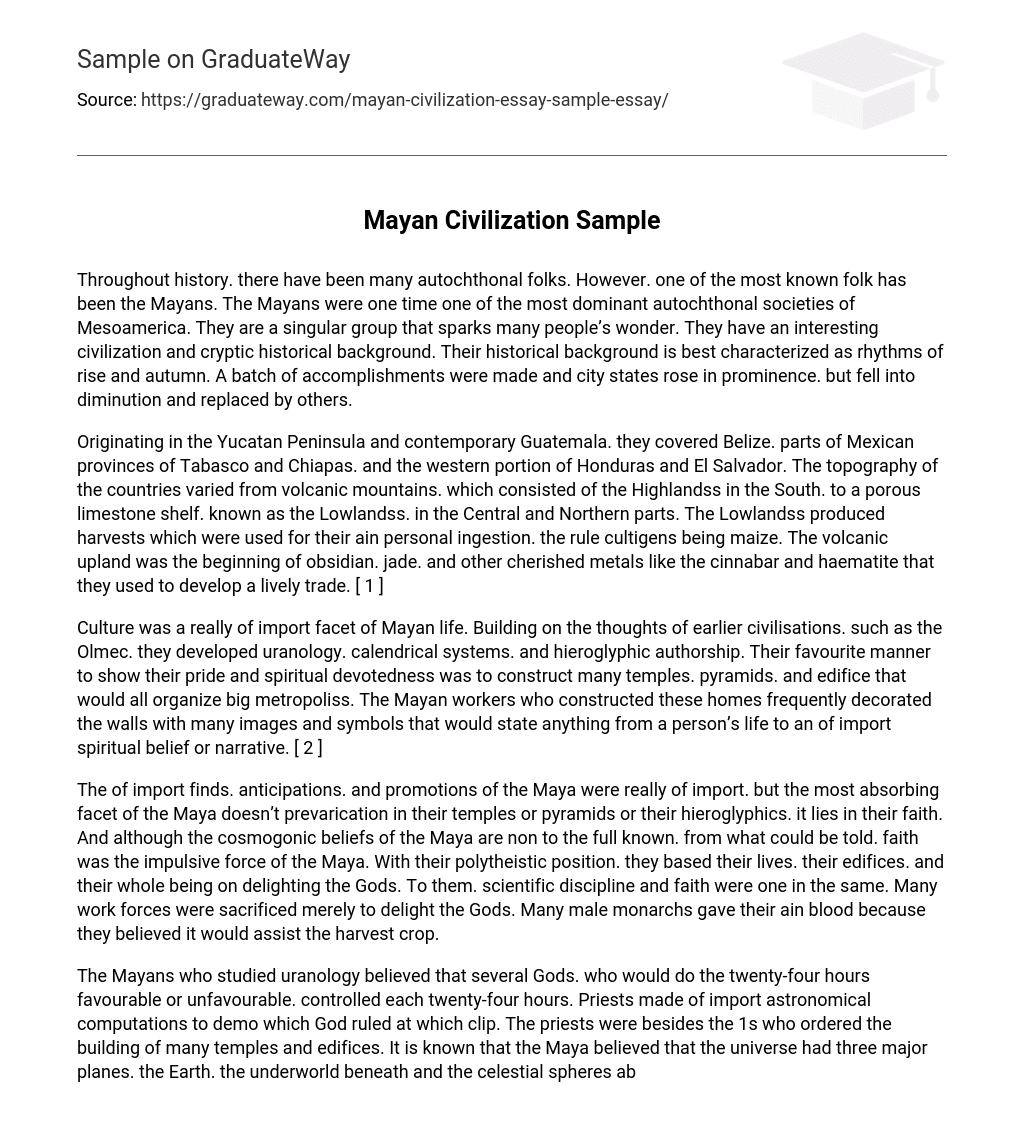Maya is known for her advanced writing, stunning achievements in art, astronomy and architecture. Despite modern misconceptions, the Maya people have not disappeared, hundreds of thousands of Maya Indians continue to live in the same territories where their ancestors lived a thousand years ago. Their traditions and language have been partially preserved. Only the classical Mayan civilization has disappeared.
The Mayan civilization began to take shape in the pre-classical era (1999 BC – 250 AD), flourished in the classical period (250-900 AD) and continued to exist in mountainous Guatemala and the Yucatan until the arrival of the conquistadors.
The Mayans built majestic stone cities, most of which were abandoned before the arrival of the Europeans. As of the early 1980s, archaeologists had discovered about 1,000 May settlements and 3,000 settlements. Some sites, including Palenque, Chichen Itza and Uxmal in Mexico, Tikal and Kirigua in Guatemala, Copan in Honduras and Hoya de Seren in El Salvador, are included in the UNESCO World Heritage List.
Maya developed a developed system of hieroglyphic writing and developed an original calendar system. The Mayan civilization had much in common with other Mesoamerican civilizations. Mayan culture is influenced by regions of Mexico up to 1,000 km from the center of their distribution. The Mayan calendar was used by other peoples of Central America.
During the I and the beginning of the II century AD. The Maya settled in a vast area covering the present-day southern states of Mexico (Tabasco, Chiapas, Campeche, Yucatan, and Quintana Roo), present-day Belize and Guatemala, and the western regions of El Salvador and Honduras. The territory of May is divided into two large zones: highlands and lowlands. The Mayan lowlands cover southern Mexico (Chiapas, Tabasco, Campeche, Yucatan, and Quintana Roo), the northern departments of Guatemala, Belize, and parts of Honduras. Under natural conditions it is a limestone lowland (90 – 200 meters above sea level). The largest rivers flow in the west (Usumasinta), south (Passion) and east (Ondo, Belize and Motagua), while in the center are wetlands and lakes.
In turn, the lowlands are divided into north and south. The northern lowlands cover the north of the Yucatan Peninsula, and the southern lowlands cover the interior. The southern lowlands are divided into four main regions: Peten, Peteshbatun, the Usumasinti Basin, and the Southeastern Region.
Peten covers the territory of the modern department of Peten (Guatemala), the southern Mexican states of Campeche and Quintana Roo, northern and central Belize. Peten is one of the oldest centers and the core of lowland culture. Here were the most powerful police, which determined the history of May in the pre-classical and classical periods: Mutul Kingdom with its capital in Tikal, Kanul Kingdom with its capital in Kalakmula, Saal Kingdom with its capital in Naranjo, Kantu Kingdom with its capital in Karkol and others.
The Peteshbatun region occupies the basins of the Passion and Chisha rivers in Guatemala. Here were important archaeological sites of the classical period: Dos Pilas, Aguateca, Seibal and others. The most powerful state in the region was the Southern Mutul Kingdom, founded by Baahlah-Chan-Ka’viil, which dominated Peteshbatun during its heyday.
The Usumasinti region or western region covers the Usumasinti River basin and surrounding areas along the modern Mexican-Guatemalan border. The territory of the region was divided into many large, medium and small police, among which are the Kingdom of Baakul with its capital in Palenque, the Kingdom of Popo with its capital in Tonina, the Kingdom of Jokib-Kin with its capital in Piedras Negras and the Kingdom of Pachan with the capital in Yashchilan. In the valley of the Lakanha River (a tributary of the Usumasinta) was the Kingdom of the Seekers with its capital on the site of the Bonampak settlement, which is known worldwide for its magnificent frescoes.
The southeastern region covers the Motagua River Valley. There is a special version of the Mayan culture, possibly with the strong non-Mayan influence of neighboring peoples ham-lenka. Among the region’s police forces were the Shukuup Kingdom with its capital on the site of the famous Kopan settlement and Tsu’so with its capital in Kirigua.





